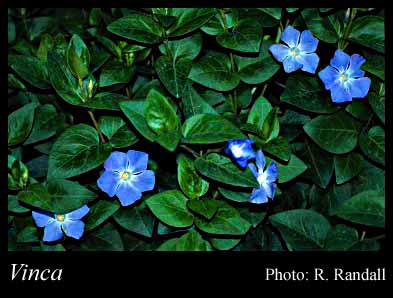- Reference
- Sp.Pl. [Linnaeus] 2:209 (1753)
- Name Status
- Current







Scientific Description
Family Apocynaceae.
Habit and leaf form. Herbs; evergreen; laticiferous (white). Plants unarmed. Perennial, or annual (not in Australia). Leaves cauline. To 0.3–0.5 m high. Mesophytic. Not heterophyllous. Leaves small; opposite; ‘herbaceous’; petiolate; simple. Leaf blades dorsiventral; entire; more or less orbicular; pinnately veined; cuneate at the base. Mature leaf blades adaxially glabrous, or pubescent (with scattered simple hairs); abaxially glabrous, or pubescent (with scattered simple hairs). Leaves without stipules. Leaf blade margins entire. Leaf anatomy. Hairs present; glandular hairs absent. Unicellular hairs absent. Complex hairs present. Branched hairs absent.
Reproductive type, pollination. Fertile flowers hermaphrodite. Unisexual flowers absent. Plants hermaphrodite.
Inflorescence and flower features. Flowers solitary; axillary; pedicellate; bracteate; small, or medium-sized; more or less odourless; regular; 5 merous; tetracyclic. Hypogynous disk present; of separate members (2 small basal scales). Perianth with distinct calyx and corolla; 10; 2 -whorled; isomerous. Calyx present; 5; 1 -whorled; gamosepalous; lobed (lobes are deeply divided); lobulate. Calyx lobes markedly longer than the tube. Calyx erect; hairy; exceeded by the corolla; regular; green. Calyx lobes linear. Corolla present; 5; 1 -whorled; gamopetalous; lobed; lobulate. Corolla lobes about the same length as the tube. Corolla contorted (sinistrorse in bud); hypocrateriform, or funnel-shaped (slightly); regular; glabrous abaxially; hairy adaxially (a region of indumentum above stamens); plain; white to blue (i.e. lilac-blue). Corolla lobes ovate (to spathulate). Androecial members definite in number. Androecium 5. Androecial members adnate (epipetalous); all equal; free of one another; 1 -whorled. Stamens 5. Staminal insertion midway down the corolla tube. Stamens all inserted at the same level; remaining included; all more or less similar in shape; isomerous with the perianth; oppositisepalous; all alternating with the corolla members. Anthers connivent (around style-head); all alike; dehiscing via longitudinal slits. Gynoecium 2 carpelled. The pistil 2 celled. Gynoecium syncarpous; eu-syncarpous; superior. Ovary plurilocular; 2 locular. Gynoecium stylate. Styles 1; style-head hairy. Stigmas 1. Placentation axile. Ovules 2–6 per locule.
Fruit and seed features. Fruit 35–40 mm long; non-fleshy; a schizocarp. Mericarps comprising follicles (paired and membranous, dehiscing longtitudionally). Dispersal unit the seed. Fruit 4–8 seeded. Seeds not compressed; not conspicuously hairy; wingless.
Geography, cytology, number of species. World distribution: Europe and Africa. Adventive. Australian states and territories: Western Australia, South Australia, Queensland, New South Wales, Victoria, Australian Capital Territory, and Tasmania. South-West Botanical Province. A genus of c. 7 species; 1 species in Western Australia; 0 endemic to Western Australia.
Additional comments. Etymology: from the Greek vinco (to conquer), alluding to the species often outcompeting other plants with their creeping roots and stoloniferous habit.
Etymology. From the Greek for "to conquer", alluding to the species often out-competing other plants with their creeping roots and stoloniferous habit.
Taxonomic Literature
- Wheeler, Judy; Marchant, Neville; Lewington, Margaret; Graham, Lorraine 2002. Flora of the south west, Bunbury, Augusta, Denmark. Volume 2, dicotyledons. Australian Biological Resources Study.. Canberra..
- Australian Biological Resources Study 1996. Flora of Australia. Volume 28, Gentianales. CSIRO.. Melbourne..
- Marchant, N. G.; Wheeler, J. R.; Rye, B. L.; Bennett, E. M.; Lander, N. S.; Macfarlane, T. D.; Western Australian Herbarium 1987. Flora of the Perth region. Part one. Western Australian Herbarium.. [Perth]..
- Blackall, William E.; Grieve, Brian J. 1981. How to know Western Australian wildflowers : a key to the flora of the extratropical regions of Western Australia. Part IIIB, (Epacridaceae-Lamiaceae). University of W.A. Press.. [Perth]..